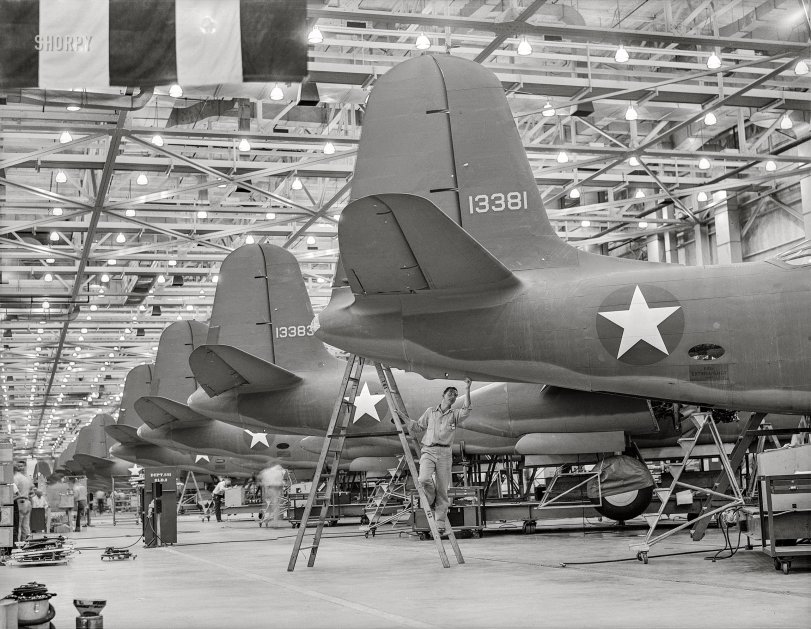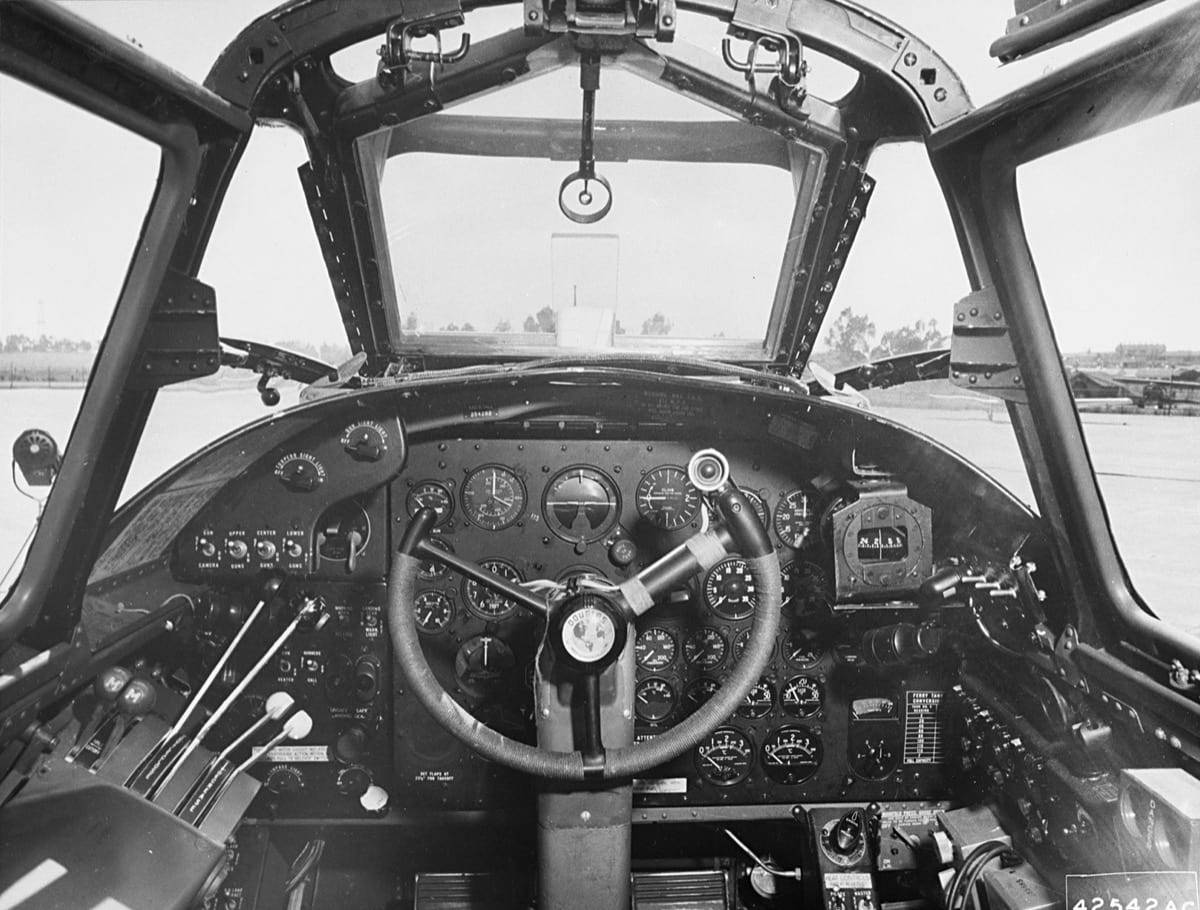


Framed or unframed, desk size to sofa size, printed by us in Arizona and Alabama since 2007. Explore now.
Shorpy is funded by you. Patreon contributors get an ad-free experience.
Learn more.

- Details, Details
- What's that building to the left of the tower?
- Coal Barges
- Bromo-Seltzer
- Inner harbor
- The Basin
- What a headache!
- Giant stepladder?
- Baldwin 62303
- Baldwin VO-1000
- Cold
- No expense spared
- Tough Guys
- Lost in Toyland
- And without gloves
- If I were a blindfolded time traveler
- Smoke Consumer Also Cooks
- Oh that stove!
- Possibly still there?
- What?!?
- $100 Reward
- Freeze Frame
- Texas Flyer wanted
- Just a Year Too Soon
- WWII -- Replacing men with women at the railroad crossing.
- Yes, Icing
- You kids drive me nuts!
- NOT An Easy Job
- I wonder
- Just add window boxes
Print Emporium
Flight Line: 1942

October 1942. "Long lines of A-20 attack bombers roll ceaselessly, night and day, through the Douglas Aircraft plant at Long Beach, California. The A-20 is used by the American Air Force and the Royal Air Force (RAF) for hedge-hopping and strafing operations against ground troops and installations -- also for reconnaissance work and night fighting. It is armed for its several duties with light and heavy caliber guns in varying combinations." 4x5 acetate negative by Alfred Palmer for the Office of War Information. View full size.
Keep 'em flying
The Douglas A-20 really made its mark in the Southwest Pacific. There, Paul Irvin "Pappy" Gunn began to modify the planes. These bombers started to get as many as six M2 .50-caliber machine guns in their nose. It was here, low-level tactics helped the A-20 live up to its name — "Havoc."
Eventually, word of Gunn’s field modifications made their way back to Douglas Aircraft, which began building A-20s with the nose guns already installed. [Source]
More info and pics here.
Image: Snug cockpit of an A-20G Havoc shows the single-place arrangement with a control yoke, and dual throttles, pitch, and mixture to the left of the pilot, fighter style. The G-model used a solid nose with fixed machine guns or cannon fired by the pilot for ground attack missions. (National Archives photo)
No way we were gonna lose this
Looking at these pics of WW2 wartime factories you have to walk away and say: No way this joint was gonna lose the war.
Gen. Dwight Eisenhower was a numbers man and this exemplifies what he meant. Throw enough men & machines at them and it will overtake anything the Axis has. Look at these well lit factories -- modern, clean, a massive production scale, unlimited resources, and a well fed work force that wasn't being bombed each night and slept in beds, not subway tunnels.
13381, 13383
This must be the odd number side of the aircraft plant. It's impressively clean, no burnt-out lights. I wonder how loud it was? The man on the ladder in the foreground strikes a good pose. He is somewhat comparable to Gene Kelly on the lamppost in the rain.
Yes seaelf, please say more. Wicked can mean more than one thing.
Where my wife's grandfather worked
Funny, not an hour ago, my wife and I were talking about what it must've been like for her dad, then a teenager, moving to Los Angeles in 1942, when his dad got a job at Douglas Aircraft for the war effort. Grandpa Joe was a machinist, previously employed by Fisher Body in Detroit. This was where he worked in his new West Coast job, and why the family moved to L.A. It's nice to have a good illustration for a conversation. Thanks, Shorpy! Could you now post some pictures of housing along La Cienega Boulevard, just north of what is now the I-10 freeway. That would be helpful. It was a family of six, in a small bungalow, probably 2 bedroom, 1 bath. Grandpa Joe slept on the kitchen floor, so mom and daughter could have privacy in a house of dominated by males. But that was a lot better than what they left behind in Detroit. At one point, 11 family members were all in the same apartment. But even that was better than life as an Armenian in the Ottoman Empire, which is where Grandpa Joe and Grandma Turfunda grew up. The whole topic of conversation was how we invariably adjust our comfort levels upward.

























On Shorpy:
Today’s Top 5